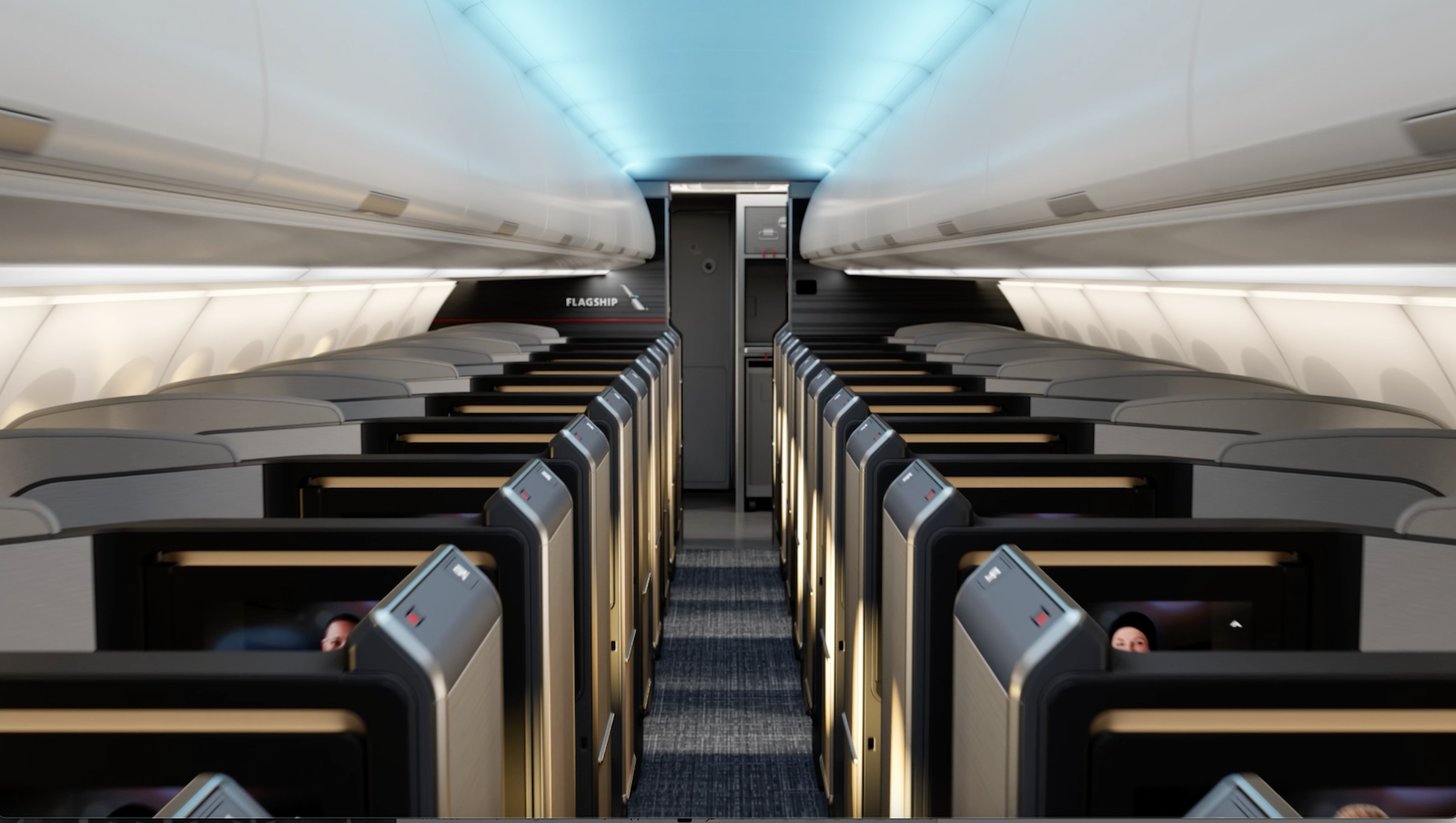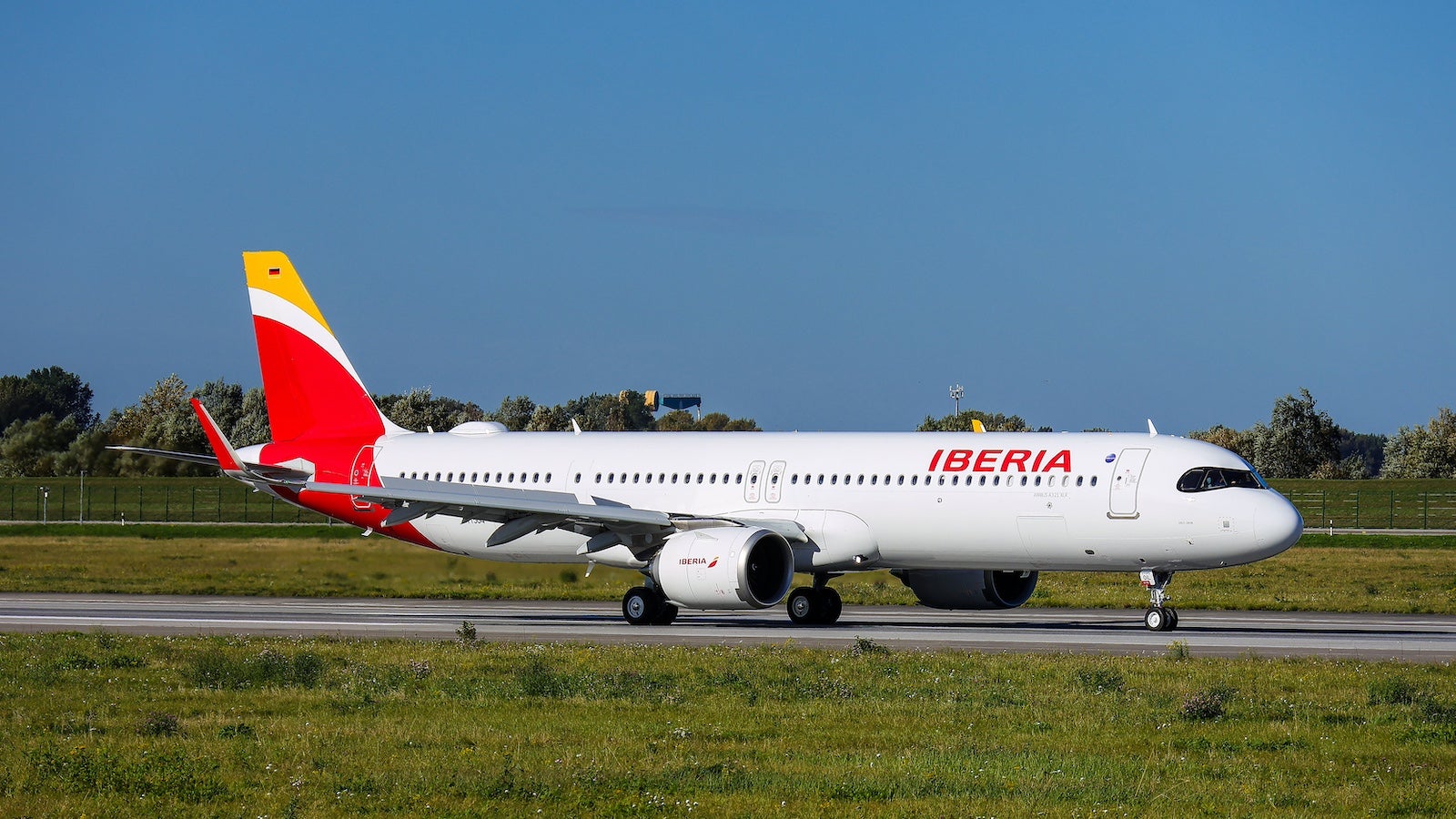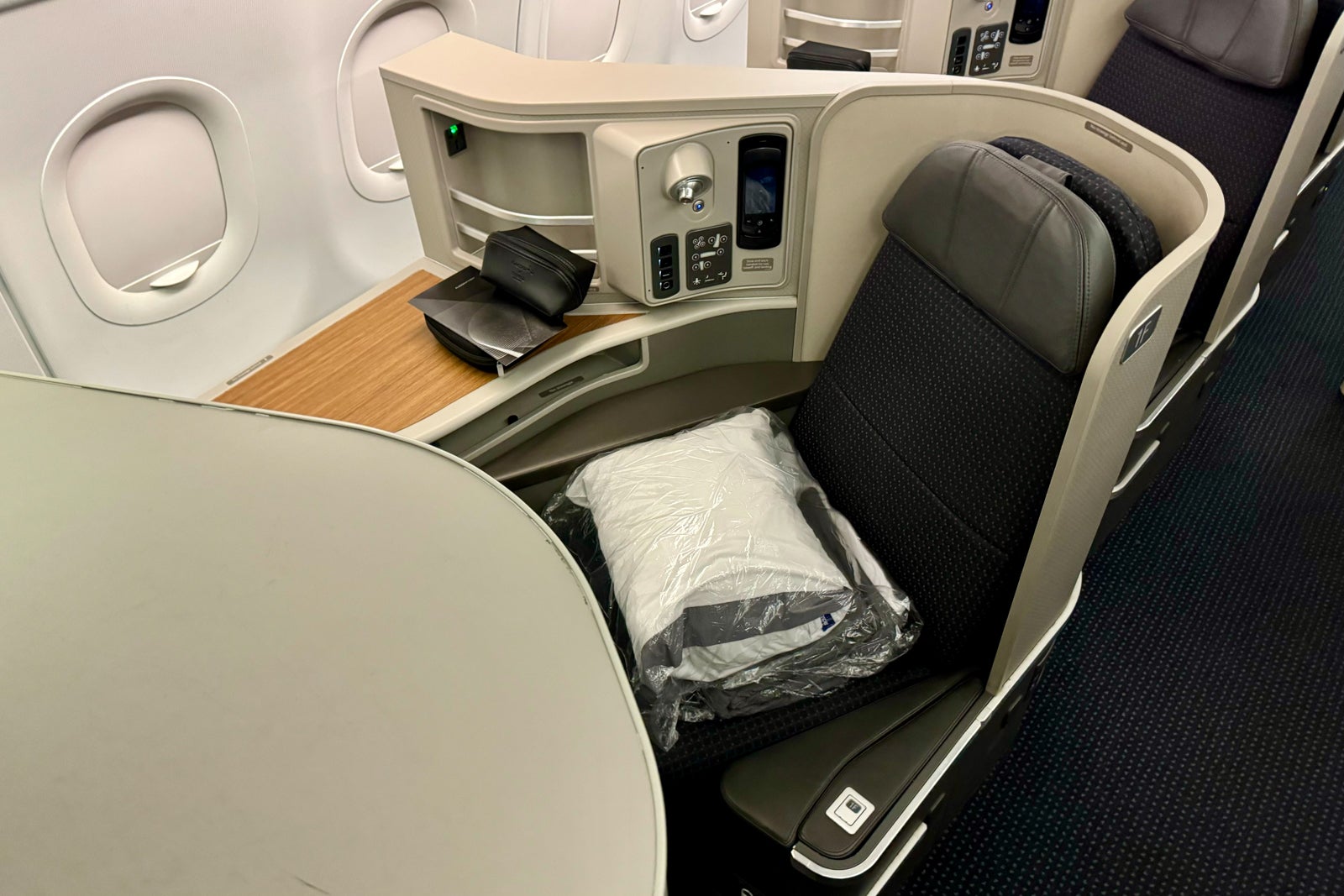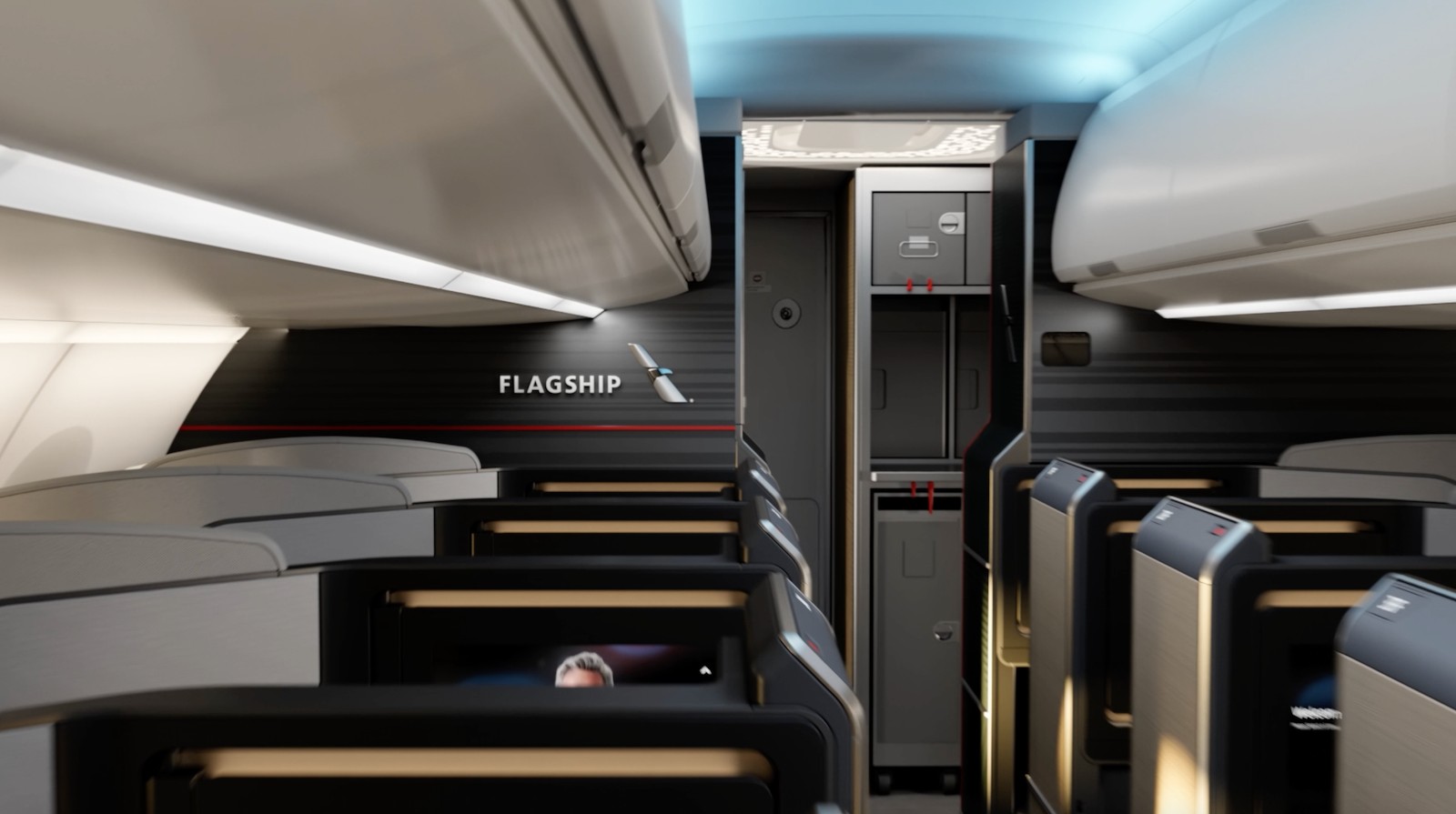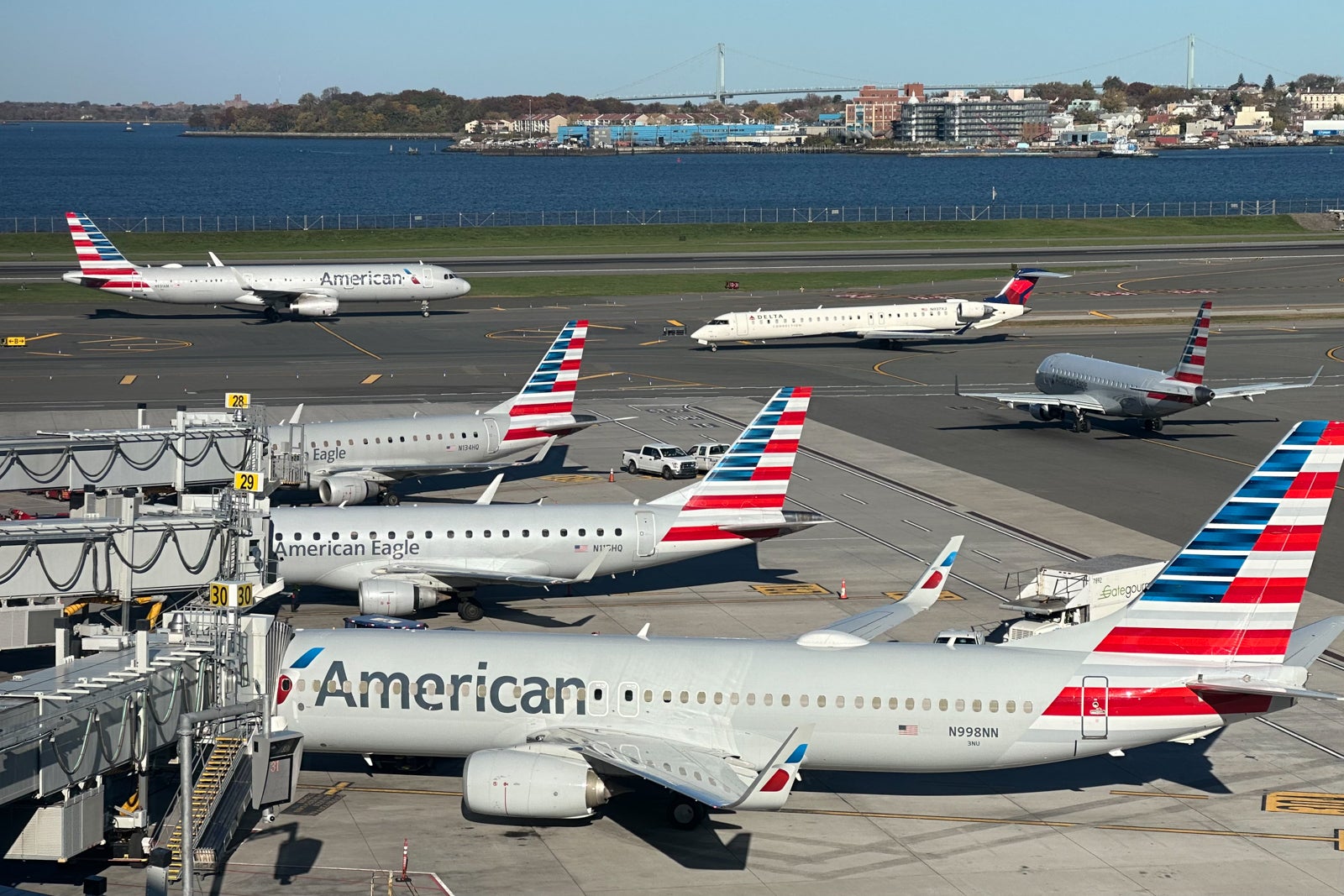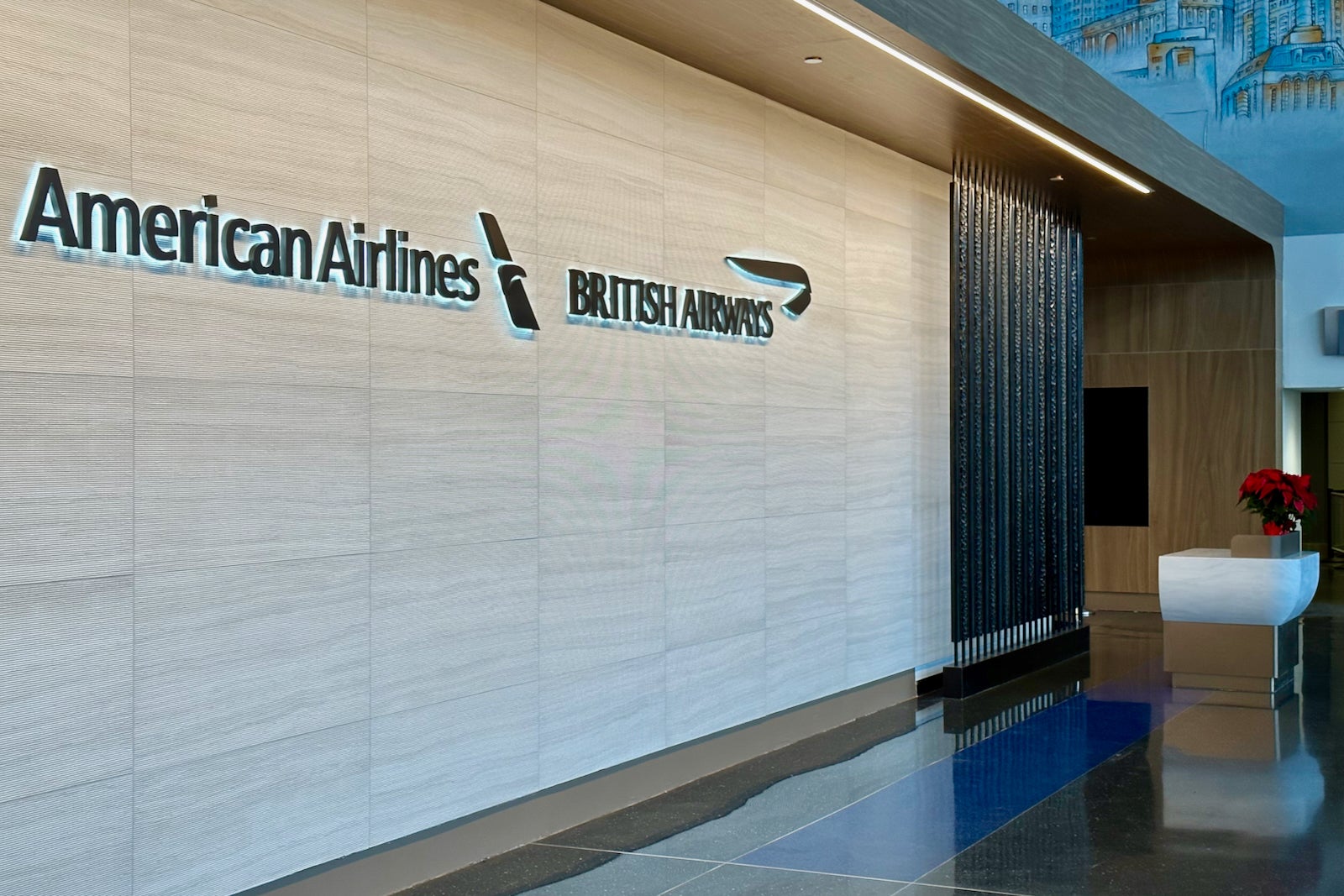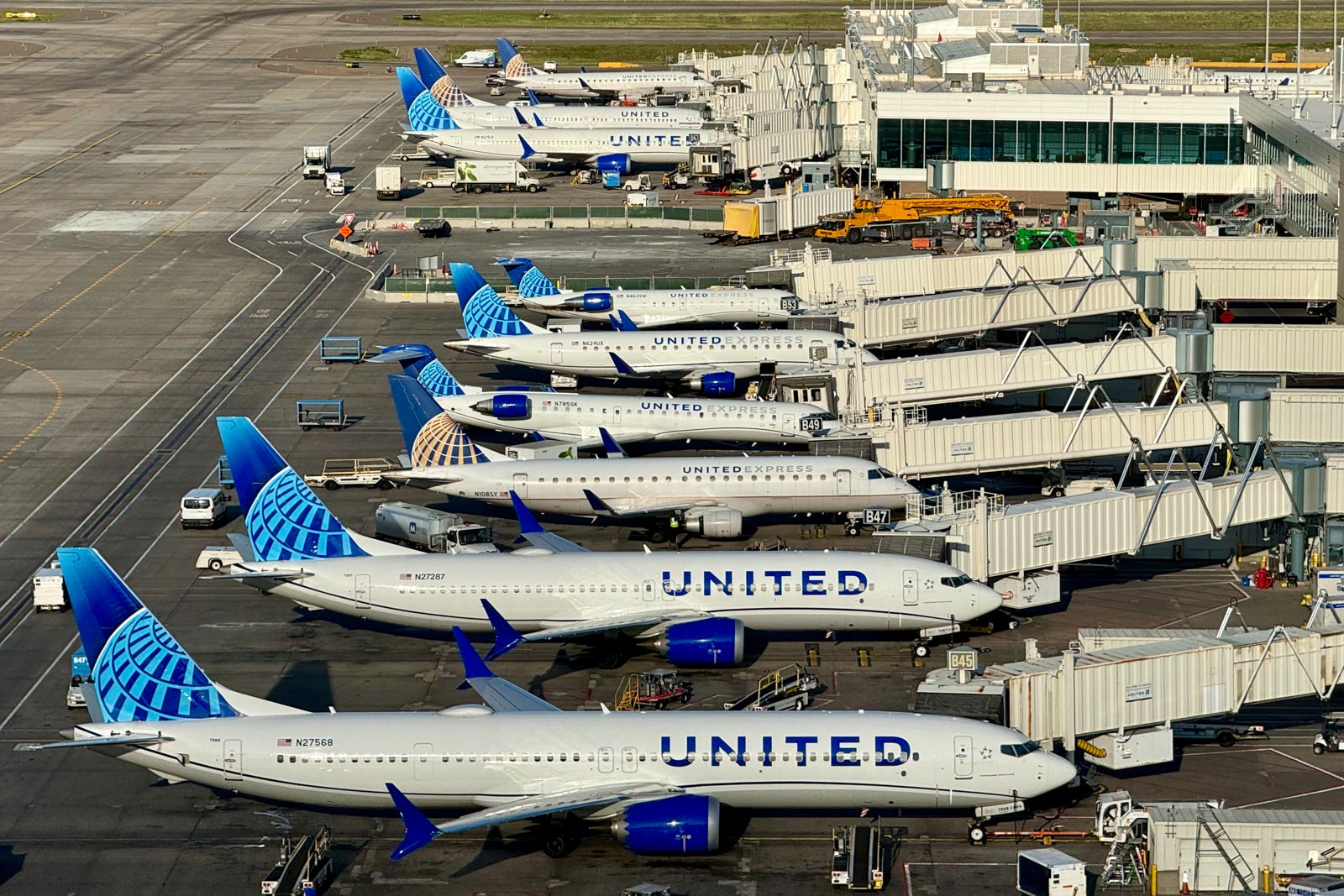American Airlines details future plans for A321XLR
Make way for the XLR.
This week, Spanish flag carrier Iberia will become the first airline in the world to launch long-haul service on the Airbus A321XLR, the newest aircraft variant to hit the market. A single-aisle jet capable of flying passengers between the U.S. and Europe, the aircraft promises to open up dozens of new routes that might not otherwise support bigger, wide-body planes.
Iberia’s XLR is configured for exactly these types of transatlantic flights, and features the type of lie-flat seats you’d expect on board a twin-aisle jet.
Indeed, when Iberia’s first XLR touches down at Boston Logan International Airport (BOS) on Thursday, it’ll usher in a new era for aviation — one the Madrid-based carrier says is owed to the jet’s fuel efficiency and impressive range.
Those factors should allow airlines more latitude to gamble on flying less traditional routes. They also have carriers around the world anxiously awaiting the aircraft’s arrival — including in the United States.
“We’re just really, really eager to get that airplane,” said Brian Znotins, senior vice president of network and schedule planning at American Airlines. “We can’t get it soon enough.”
American Airlines ‘eagerly’ awaits first XLRs
American, which has orders for 50 A321XLRs, now expects its first should hit its fleet at some point in 2025; the carrier hasn’t yet announced a more specific timeline, amid production delays at Airbus.
The airline’s plans for its initial deliveries are fairly straightforward: The jet will take over premium transcontinental routes currently served by American’s upscale A321T as part of a phasing out of the latter aircraft’s popular four-cabin layout. (The XLR won’t offer Flagship First, as the current-generation A321T does, but it will sport a higher total number of premium accommodations in the form of the American’s new Flagship Business suites).
Unlocking new routes
But that premium-heavy configuration is also a big reason American, like its global competitors, sees the XLR as a way to unlock not-flown-before routes.

Daily Newsletter
Reward your inbox with the TPG Daily newsletter
Join over 700,000 readers for breaking news, in-depth guides and exclusive deals from TPG’s experts
By the summer of 2026, American plans to start adding new overseas routes uniquely feasible with the XLR’s range of 4,700 nautical miles, and lower cost-to-operate by a larger Boeing 777 or 787 Dreamliner.
It’s too early to say definitively what routes American might add — but the carrier is already mulling its options, Znotins said, speaking to TPG exclusively from the airline’s Fort Worth headquarters in late October.
“We are looking at new, secondary Spain, Portugal, U.K., anything in range — France, Germany, Scandinavia, all these smaller destinations that we think a wide-body just isn’t well suited for,” Znotins said.
Other possible uses for the jet include routes deep into South America from American’s Miami International Airport (MIA) hub, Znotins added. The aircraft could also help the carrier add extra daily flights on some international routes, or turn seasonal service into year-round —”XLR in the winter, wide-body in the summer,” Znotins said.
Plus, American also sees potential opportunity in bringing lie-flat accommodations to a wider array of transcontinental flights. Today, the A321T flies just a small number of routes between New York and Boston on the East Coast and San Francisco, Los Angeles and Orange County on the West Coast.
“I would love if we had even more transcon flights on a flatbed-equipped product,” Znotins said.
A creative, competitive landscape
To the extent the XLR jets eventually allow American to push the boundaries of where (and when) it flies, that may be necessary. Today, the carrier faces increasingly creative competition when it comes to international flying.
United Airlines recently earned a barrage of headlines in announcing its 2025 international schedule, featuring unique nonstop service to the likes of Greenland, Sicily, Mongolia and Senegal. Just last month, the Chicago-based carrier also became the only U.S. airline with nonstop service to Morocco. It’s done all of this without scheduling service on a single XLR jet of its own — but United executives are already promising head-turning route announcements when its own XLRs come.
“We’ve got a number of new surprises up our sleeve when we get the A321XLRs,” United’s top network planner, Patrick Quayle, told TPG’s Zach Griff this fall.
American touts existing international route map
Make no mistake, American also expects to fly places it never thought possible in the coming years, helped by its newest jet. “We’ve got stuff coming,” Znotins said.
In the meantime, the airline remains bullish on its existing international service.
American just announced two additional seasonal 2025 routes to Venice and Naples aboard Boeing 787 Dreamliners, boosting its biggest-ever summer schedule to Italy. Its 2025 transatlantic plans also include a new nonstop flight from Charlotte Douglas International Airport (CLT) to Athens, Greece, as the carrier continues to see unrelenting demand for trips to southern Europe.
Next June, July and August, it’ll fly to Italy, Spain and Greece with 15% more seats than summer 2024 — and 21% more seats than prepandemic 2019, according to data from aviation analytics firm Cirium.
“As a network planner, you love new dots on the map. You always do. That’s your art on the wall, right?” Znotins said. “But at the end of the day, we are in the business of taking people where they want to go, and in the volumes that drive profitability.”
Asked about American’s international network on last month’s earnings call, CEO Robert Isom also touted the company’s joint venture with British Airways — featuring, Isom said, “the best shuttle to London Heathrow” from New York’s John F. Kennedy International Airport (JFK), where the partners jointly operate two high-end lounges.
And the airline continues to see its domestic connectivity — anchored by its Sunbelt hubs — as a linchpin to its success.
“If we can win in Tucson, and Indianapolis, and these markets,” Znotins said, “that’s just as important on our earnings call as it is for winning in Heathrow and South Caicos and Brisbane, or wherever it may be.”
Related reading:

